Make a simple DIY face mask that unclogs pores and leaves your skin glowing. I’ll show you how to make a clay mask (and 6 variations) using bentonite clay, kaolin clay, French green clay, or rose clay.
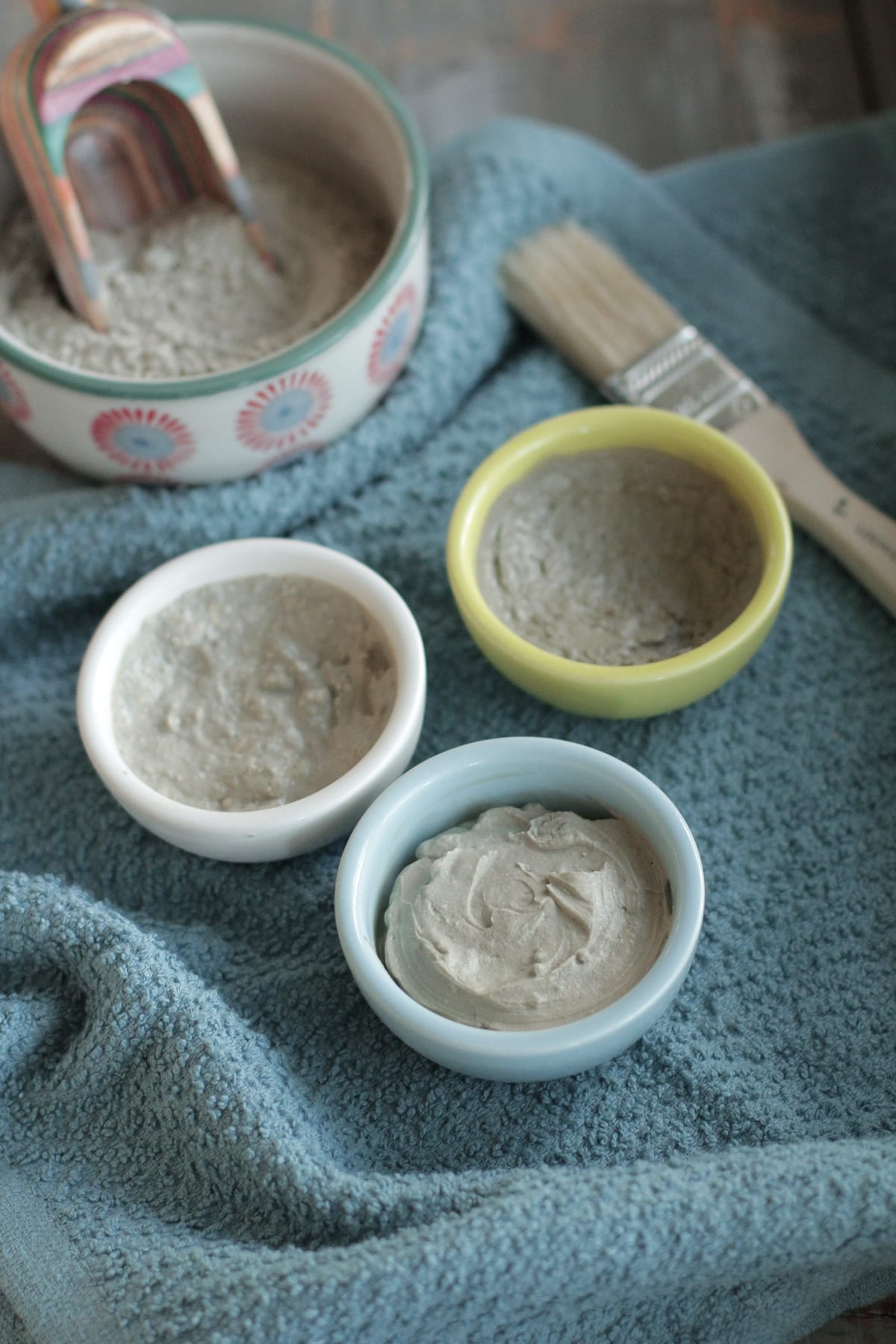
Want to Save This Article?
Enter your email & I’ll send it straight to your inbox. And you’ll get new recipes & tips each week.
Homemade Clay Mask Benefits
- Natural Ingredients – Make your own face clay mask without hash ingredients. Instead, use simple ingredients for your skin, like clay, honey, yogurt, oats, and charcoal.
- Cheap – Making your own “mud masks” or clay masks at home is a great way to save money on beauty products. The DIY recipes in this article use cheap, easy-to-find ingredients.
- Tighter Pores – You can’t shrink pores, but you can clean your pores and remove gunk and debris that makes pores more visible. Homemade clay masks are a great way to do this.
- Absorb Oil and Bacteria – If you struggle with acne, using a clay mask once a week may be beneficial. A clay mask may remove impurities and prevent future breakouts (source).
- Customize For Your Skin – Make an essential mask with basic ingredients (just clay and water), or customize your own mask to meet your skincare needs by adding yogurt, honey, oats, or an essential oil to the clay.
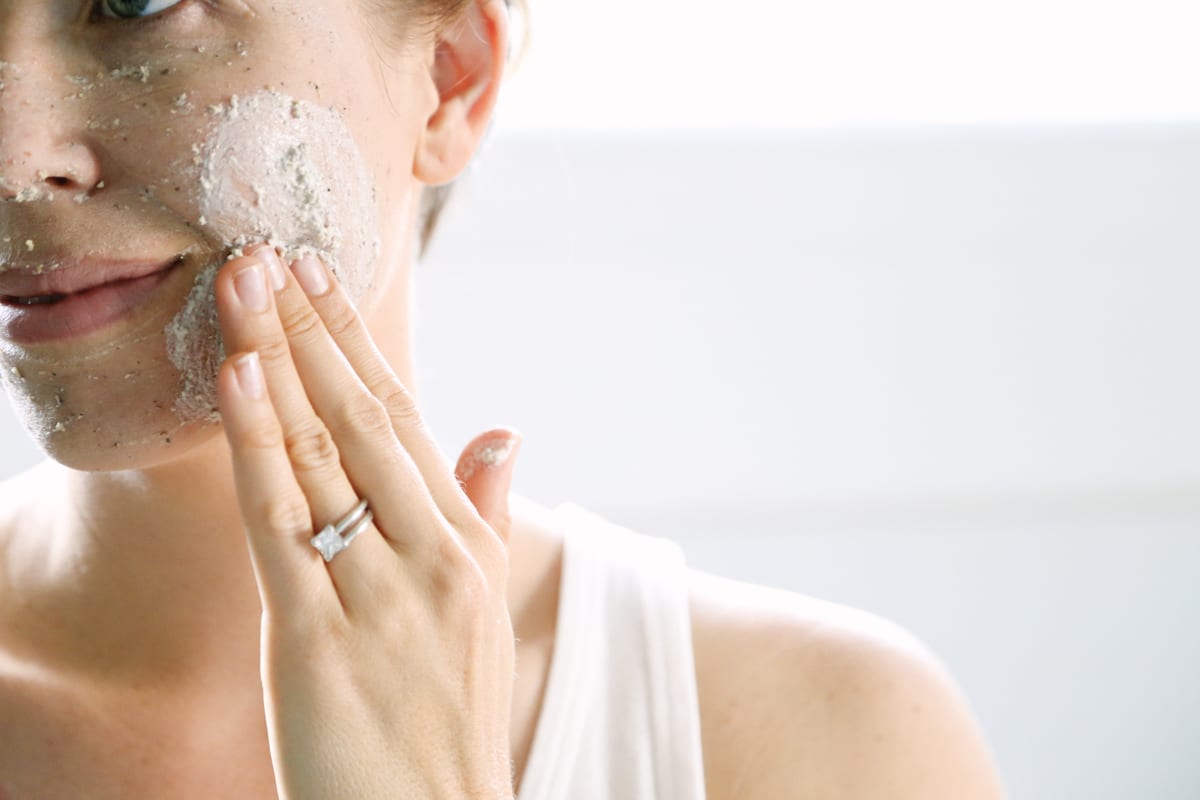
What’s the Best Type of Clay for a Face Mask?
Several different types of clay may be used to make a face mask. These are the best cosmetic clays for making natural clay face masks at home.
- Bentonite Clay – My go-to clay for most skincare recipes. This clay has an electrical charge, which allows it to absorb toxins. Metal tools shouldn’t be used when working with bentonite clay. Great for oily skin types.
- White Kaolin Clay – A gentle white-colored variety of clay known for deep cleansing and exfoliating. Suitable for all skin types.
- French Green Clay – A green clay that’s mined from naturally occurring deposits in France. It’s known for its toning properties and detoxifying properties. It also helps stimulate blood flow on the skin as it dries. Suitable for all skin types.
- Rose Clay (AKA: Pink Kaolin)- A dusty, rose-colored clay that gets its color from its iron oxide content. A gentle clay that can gently cleanse, exfoliate, and reduce inflammation. Suitable for all skin types.
6 DIY Clay Mask Ideas To Make at Home
All of these easy recipes are a one-time use DIY project.
Choose the clay face mask recipe that best fits your skincare needs. They do not have a shelf life, so you’ll need to mix up your preferred mask just before applying it to the skin. Use any clay desired (as talked about above).
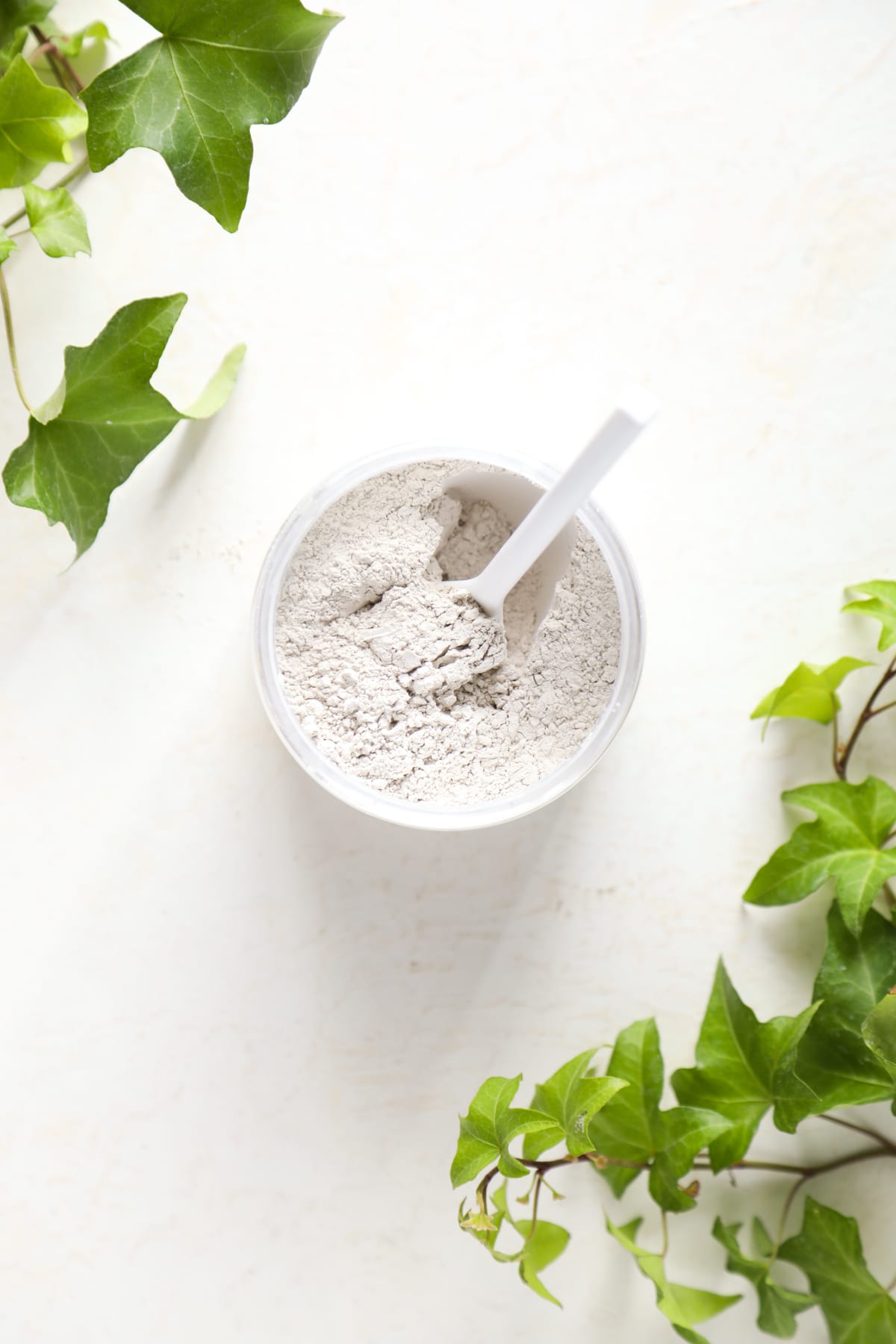
Recipe 1: Basic Clay Mask
Benefits – Detoxifies pores, exfoliates, and cleanses the skin.
Ingredients & Instructions
- 1/2-1 tablespoon clay of choice: White Kaolin Clay, Rose Clay, French Green Clay, or Bentonite Clay
- 1 tablespoon water
- Combine ingredients in a small bowl.
- Apply a thin layer to the face and neck using fingers or a brush.
- Wait 5-15 minutes for the clay to dry.
- Rinse with a warm washcloth to remove the mask from the face, rinsing the cloth and wiping the face as needed until entirely removed.
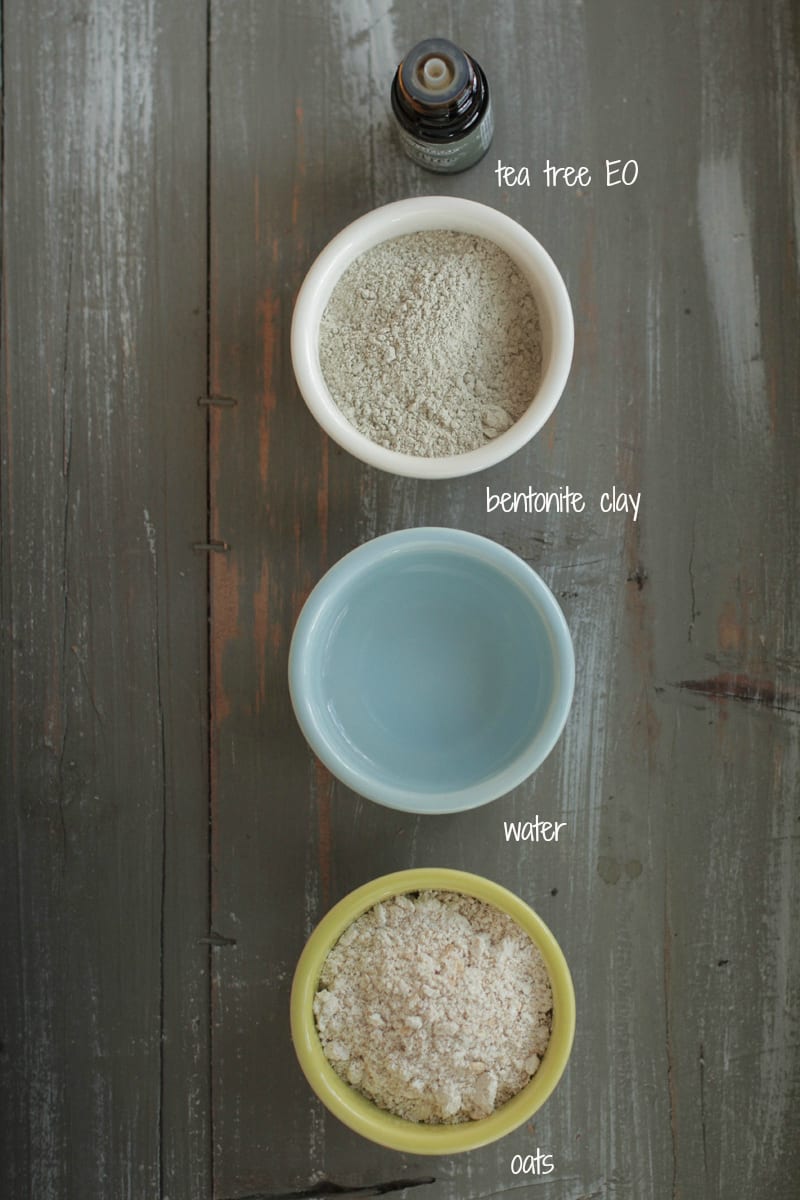
Recipe 2: Oat & Clay Mask
Benefits – Adding oats to your clay mask is a good option if you want to add a bit of exfoliation and reduce inflammation.
Ingredients & Instructions
- 1 tablespoon clay of choice: White Kaolin Clay, Rose Clay, French Green Clay, or Bentonite Clay
- 1-2 tablespoon water
- 1 tablespoon ground oats (buy oat flour from the grocery store or grind 1 tablespoon rolled oats in a spice grinder for a few seconds)
- 1 drop tea tree essential oil (optional)
- Combine ingredients in a small bowl.
- Apply a thin layer to the face and neck using your fingers, massaging the mask on the skin as you apply for exfoliation benefits.
- Wait 5-15 minutes for the clay to dry.
- Rinse with a warm washcloth to remove the mask from the face, rinsing the cloth and wiping the face as needed until entirely removed.
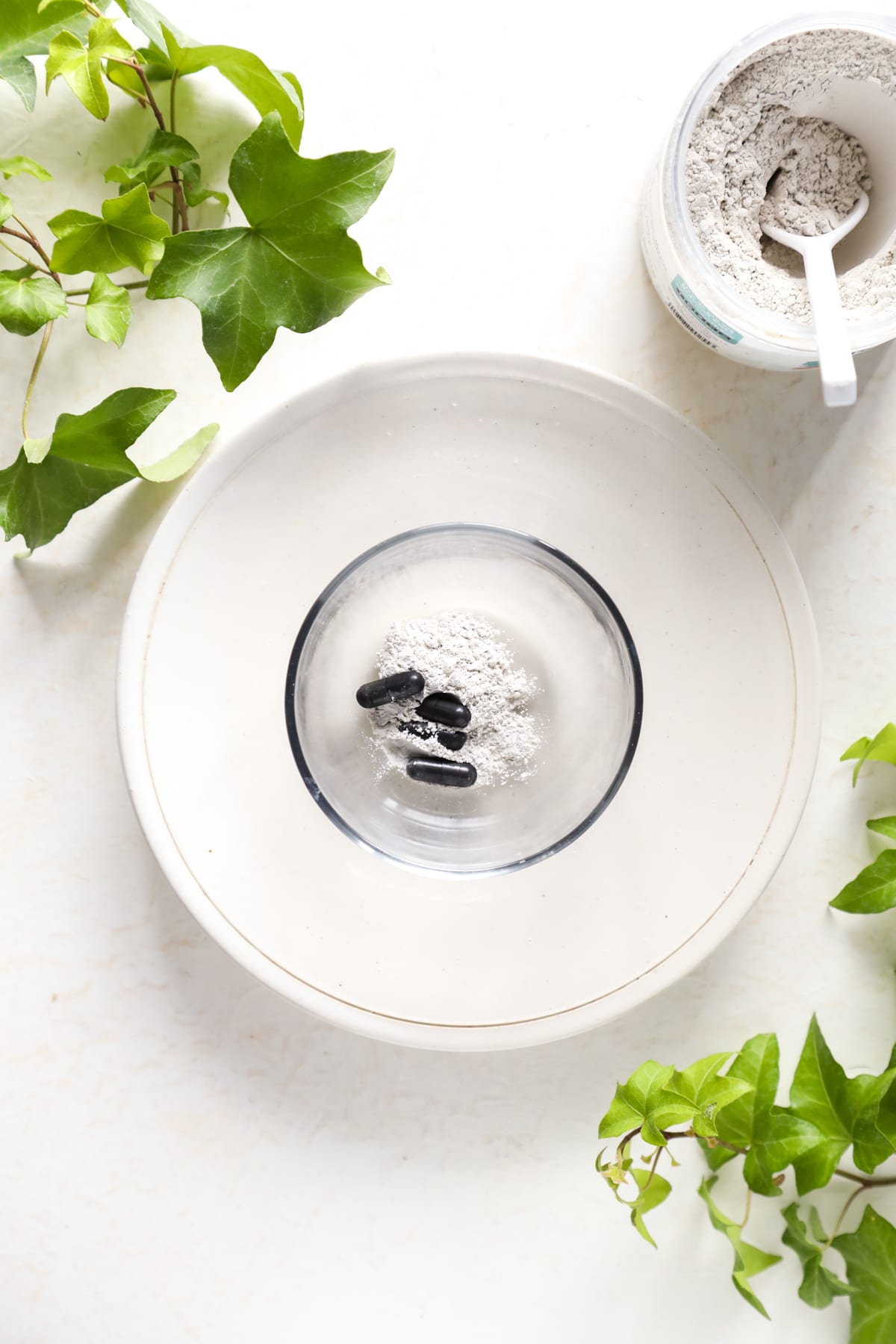
Recipe 3: Charcoal & Clay Mask
Benefits – Activated charcoal is a natural remedy for detoxifying food poisoning. This natural ingredient (easily found at any grocery store in the supplement/vitamin aisle) is excellent for acne, soaking up excess oil, and may even improve dark spots (source).
Ingredients & Instructions
- 1/2 tablespoon clay of choice: White Kaolin Clay, Rose Clay, French Green Clay, or Bentonite Clay
- 1 capsule activated charcoal (about 1/4 teaspoon of powder)
- 1 tablespoon water
- Combine ingredients in a small bowl.
- Apply a thin layer to the face and neck using your fingers.
- Wait 5-15 minutes for the clay to dry.
- Rinse with a warm washcloth to remove the mask from the face, rinsing the cloth and wiping the face as needed until entirely removed. Use a dark washcloth, as the charcoal will stain white.
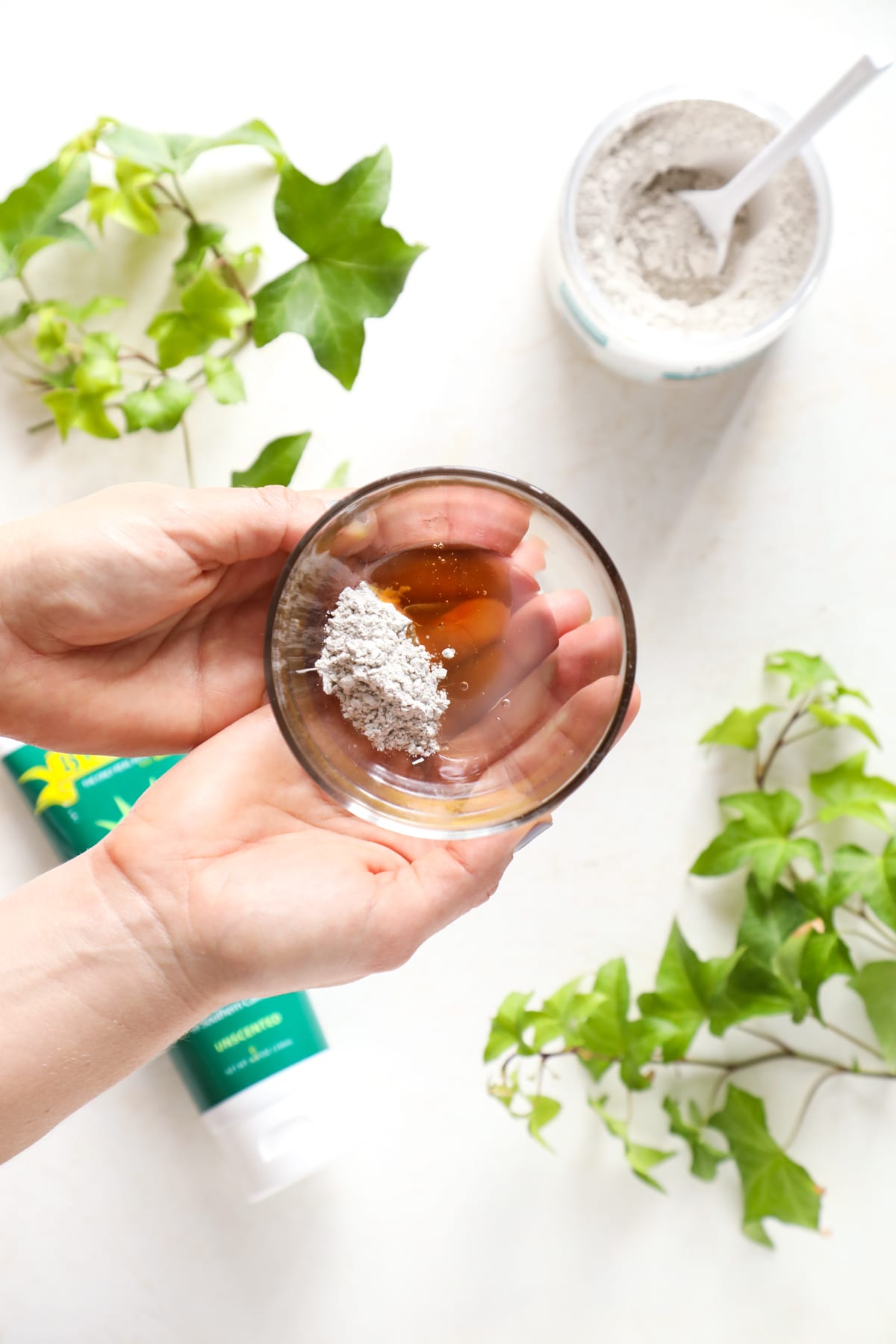
Recipe 4: Aloe Vera, Honey & Clay Mask
Benefits – Honey and aloe vera gel are a great addition to acne-prone skin. Honey and aloe vera gel are soothing. Honey is an exfoliator; it helps balance the bacteria on your skin and can speed up the “healing process” (source).
Ingredients & Instructions
- 1 tablespoon clay of choice: White Kaolin Clay, Rose Clay, French Green Clay, or Bentonite Clay
- 1 tablespoon water
- 1 tablespoon raw honey
- Combine ingredients in a small bowl.
- Apply a thin layer to the face and neck using fingers or a brush.
- Wait 5-15 minutes for the clay to dry.
- Rinse with a warm washcloth to remove the mask from the face, rinsing the cloth and wiping the face as needed until entirely removed.
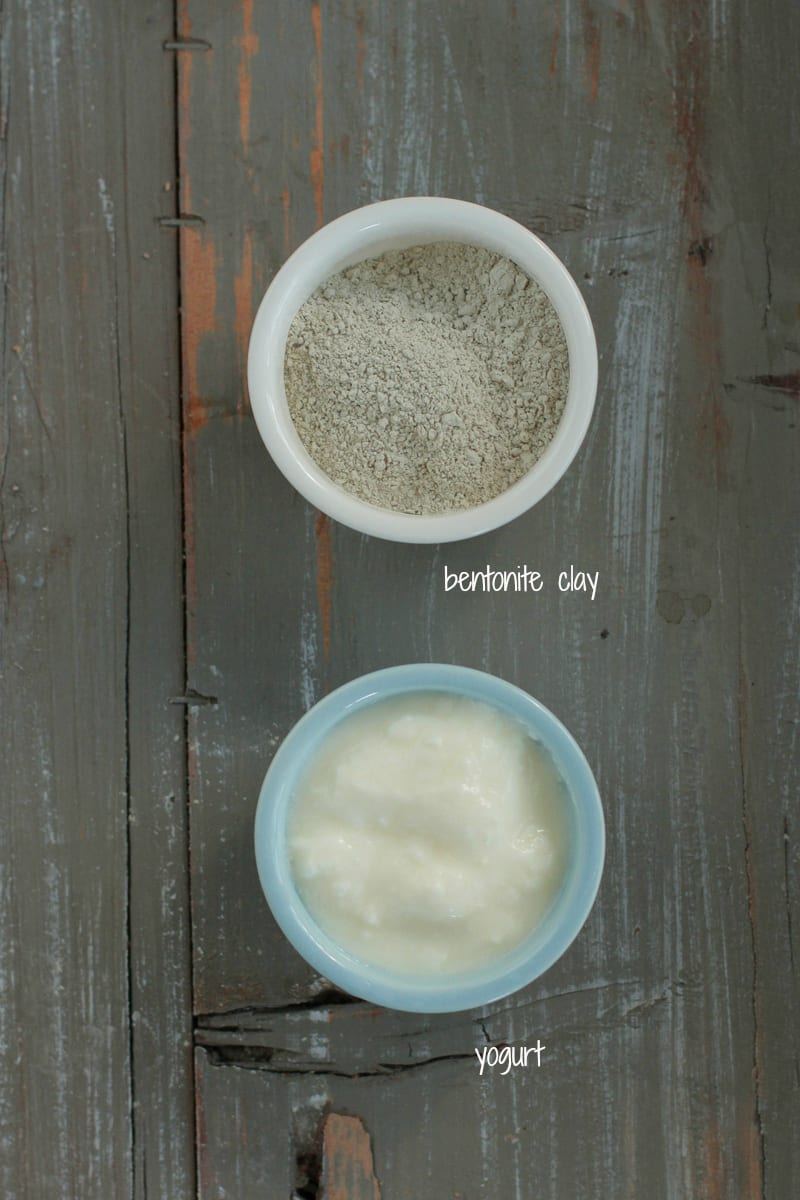
Recipe 5: Yogurt & Clay Mask
Benefits – Yogurt provides fatty acids, beneficial bacteria, and vitamins and minerals which can soften the skin and provide a glowy, rejuvenated appearance.
Ingredients & Instructions
- 1/2 tablespoon of clay of choice: White Kaolin Clay, Rose Clay, French Green Clay, or Bentonite Clay
- 1 tablespoon of plain (unsweetened) yogurt
- Combine ingredients in a small bowl.
- Apply a thin layer to the face and neck using fingers or a brush.
- Wait 5-15 minutes for the clay to dry.
- Rinse with a warm washcloth to remove the mask from the face, rinsing the cloth and wiping the face as needed until entirely removed.

Recipe 6: Clay & Witch Hazel
Benefits – Relieve inflammation, reduce skin irritations, fight acne (source)
Ingredients & Instructions
- 1/2-1 tablespoon clay of choice: White Kaolin Clay, Rose Clay, French Green Clay, or Bentonite Clay
- 1 tablespoon of witch hazel
- Combine ingredients in a small bowl.
- Apply a thin layer to the face and neck using fingers or a brush.
- Wait 5-15 minutes for the clay to dry.
- Rinse with a warm washcloth to remove the mask from the face, rinsing the cloth and wiping the face as needed until entirely removed.
Reader Reviews
The mask worked well for me. Thank you. -Marnus
I love the oat and clay mask recipe. Thank you so much for sharing it! I think the oatmeal really soothed the usual irritated feeling I get with a clay mask. -Aleasha
Expert Tips
- Prep Face – Wash your face with a natural face wash to clean and prepare the skin before applying a clay mask.
- Moisturize – After making, follow up with a hydrating moisturizer.
- Prevent Drying – If the mask dries too quickly, mist your face with water or witch hazel (using a spray bottle) to moisten the mask and prevent it from flaking and over-drying.
- Multiple Applications – The recipes make enough for one-time use. You can make multiple applications and store in an airtight container for up to 2-3 days. For the yogurt and oatmeal mask (since they contain food ingredients), you’ll need to store the extra mask in the fridge for up to 3 days.
FAQs
- How long should I wear a clay mask? 5-15 minutes depending on the sensitivity of your skin.
- Can I add essential oils to a clay mask? Yes, you can. I love lavender essential oil for its calming properties or tea tree essential oil when breaking out. Choose an essential oil that works best for your skin needs. A little essential oil goes a long way, so you only need a drop or two.
- Can you make DIY face masks without clay? Yes, you can. I love using yogurt and honey or just yogurt. Yogurt is a fantastic face mask ingredient that exfoliates the skin.
- Does clay contain heavy metals? Clay is naturally found in the earth and may include some metals. If this concerns you, I recommend researching companies and sourcing before purchasing clay.
- What should I apply on my face after using a clay mask? Wait a few minutes for your skin’s pH to balance, then apply a natural moisturizer.
- Do I need to remove makeup or wash my face before applying a clay face mask? Yes, always remove makeup and wash your face with a good cleanser before applying a mask.
More Homemade Face Masks
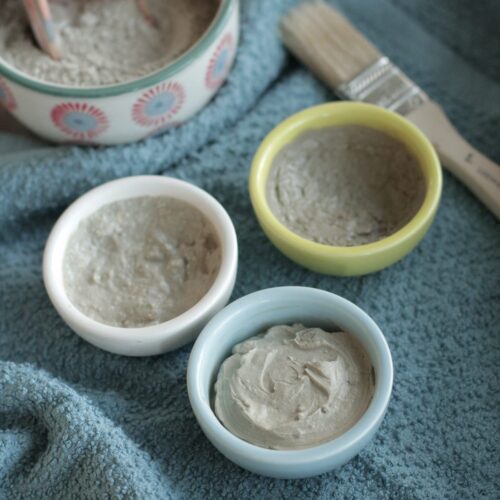
Basic Homemade Clay Mask Recipe
Equipment
- 1 small bowl
Ingredients
- 1/2-1 tablespoon clay of choice such as: bentonite clay, kaolin clay, French green clay, rose clay
- 1 tablespoon water
Instructions
- Combine ingredients in a small bowl.
How to Use:
- Always remove makeup and wash your face with a good face wash before applying a mask.
- Apply a thin layer to the face and neck using fingers or a brush. Wait 5-15 minutes for the clay to dry.
- Rinse with a warm washcloth to remove the mask from the face, rinsing the cloth and wiping the face as needed until entirely removed.
- After using, apply a moisturizer: my favorite natural moisturizers.
Notes
Natural Body-Care Simplified
Learn how to make your own body and beauty products with simple ingredients.

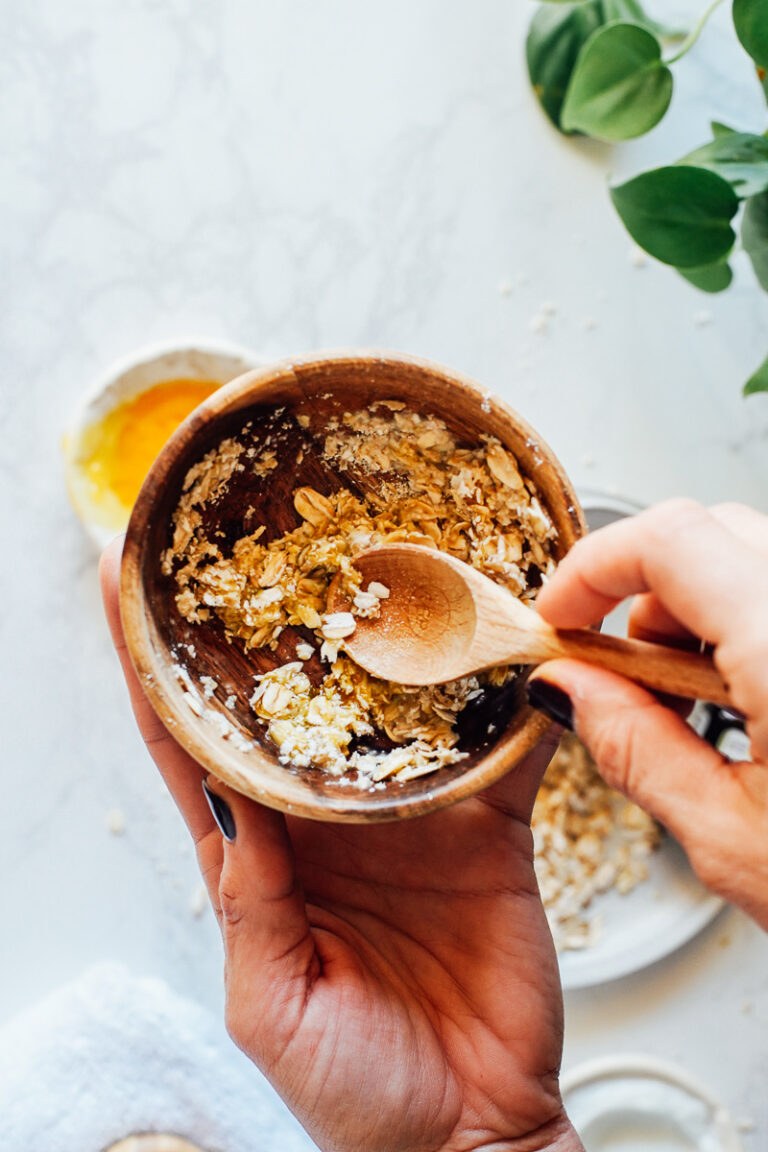
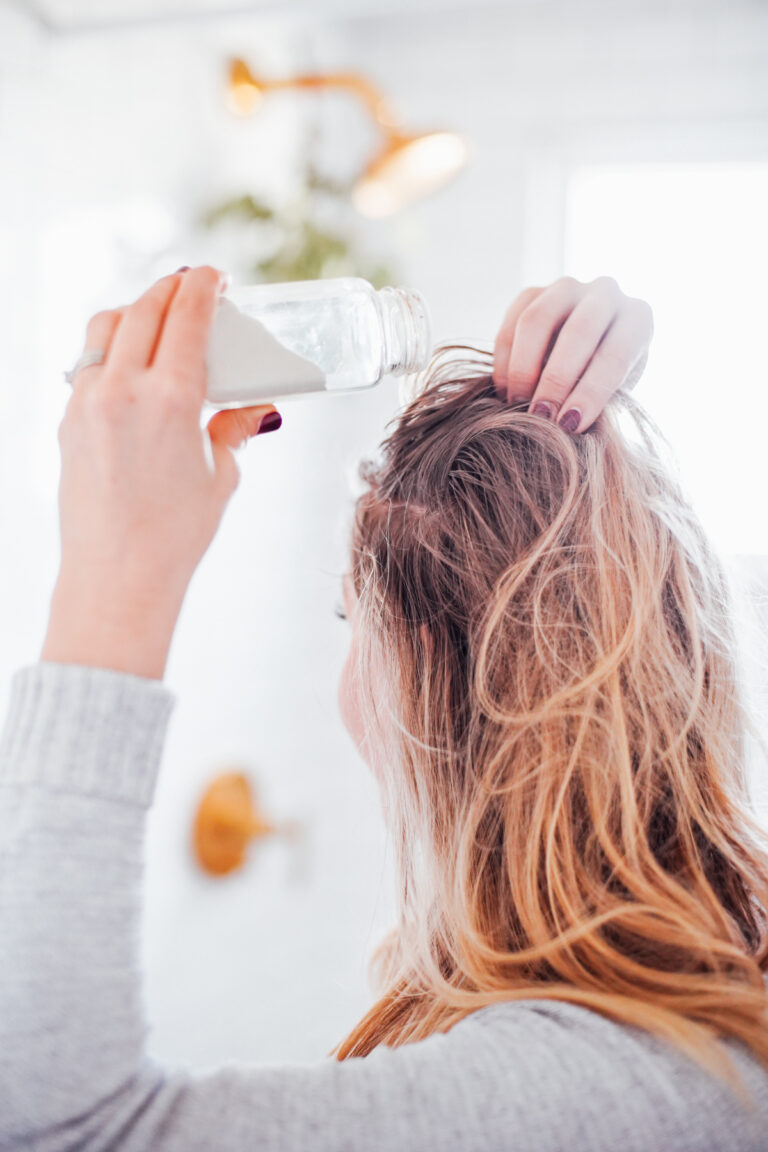
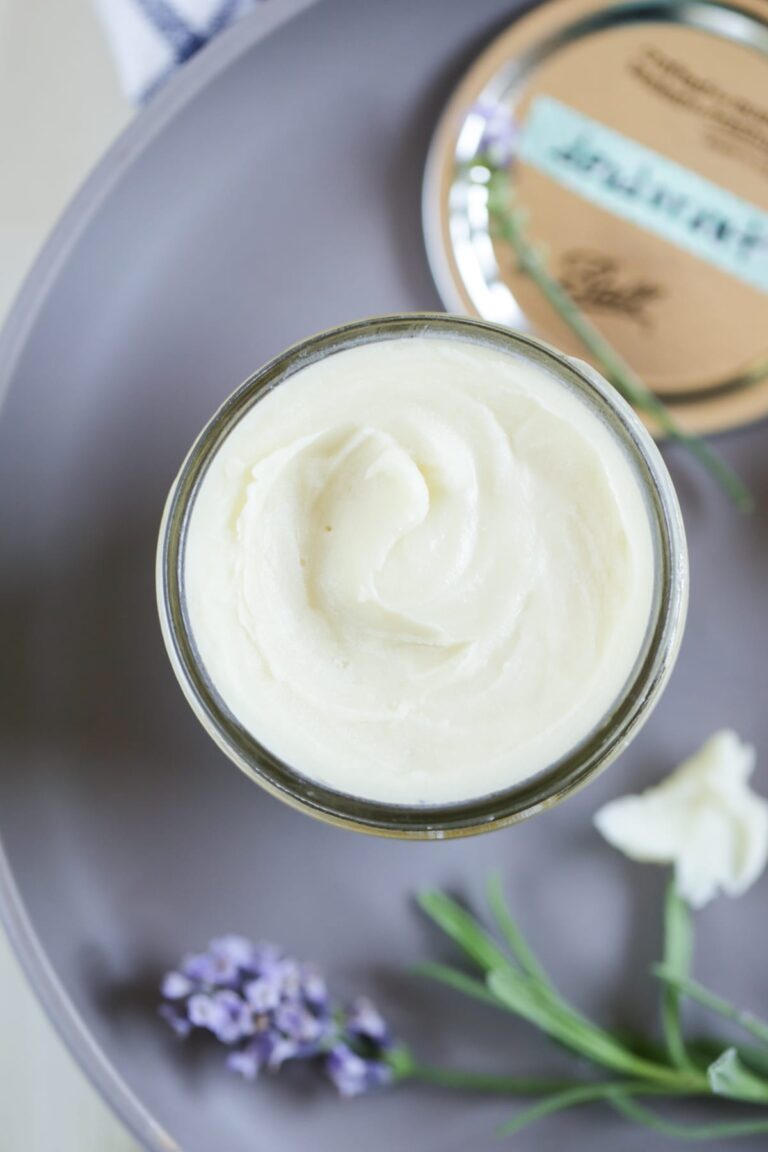
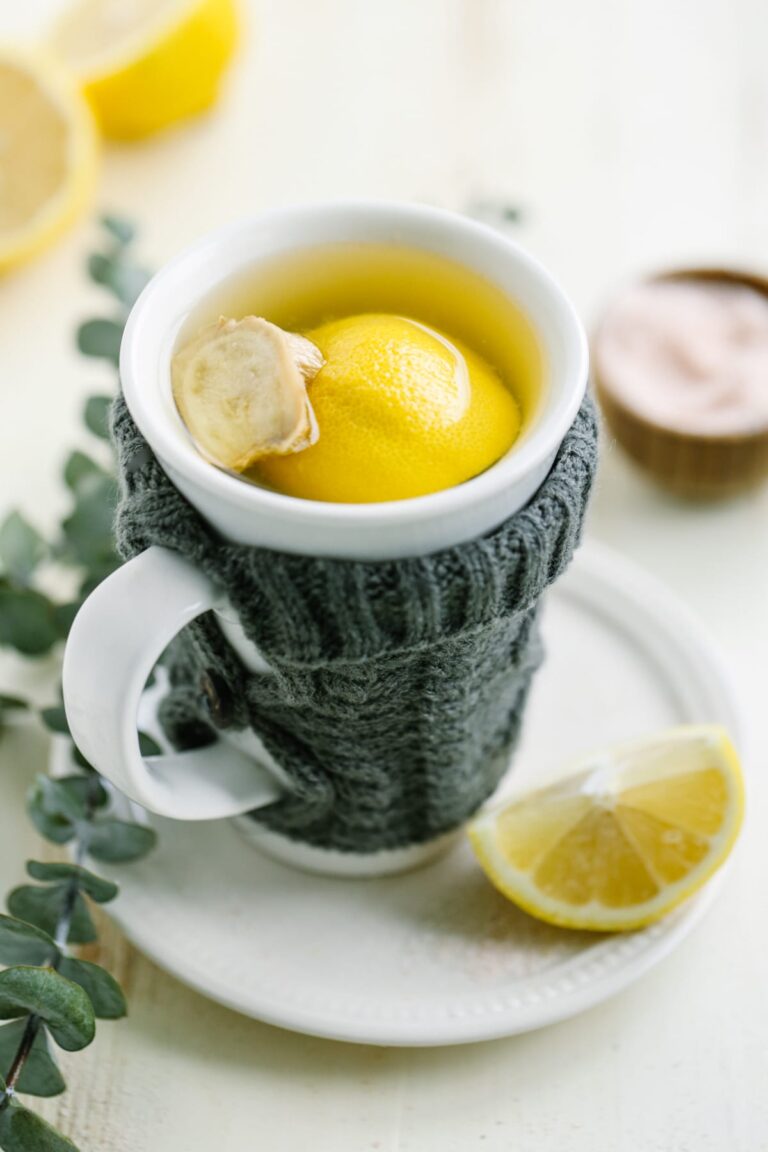
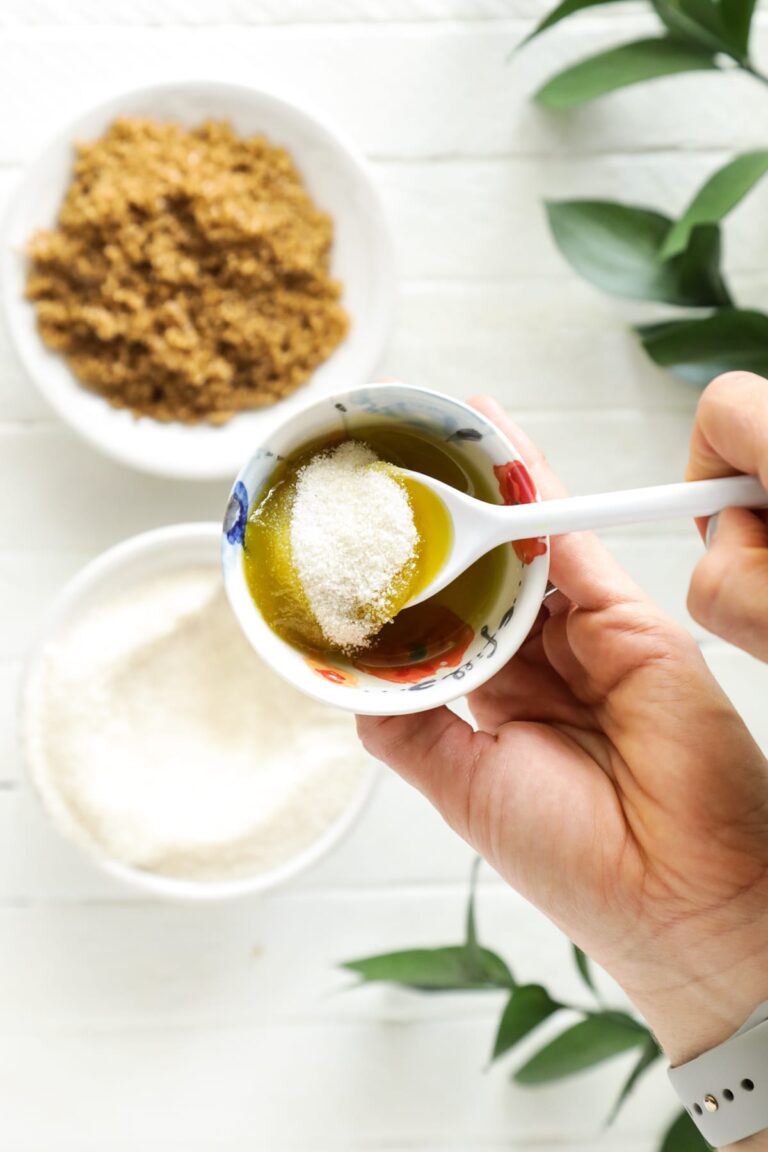
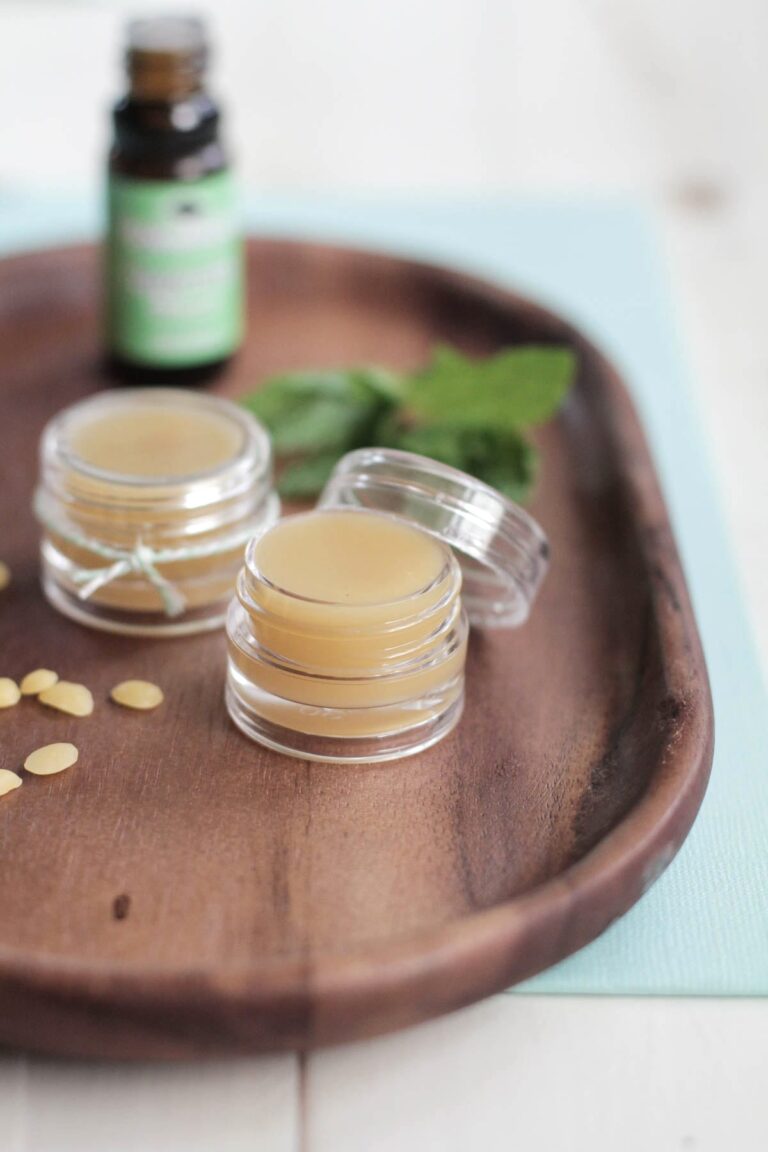
I have mild acne and some red and dark spots which fighting acne mask should i choose?
I would go with this one: https://livesimply.me/2016/08/19/soothing-clay-mask-for-stubborn-breakouts-and-scars/.
I am interested in making some clay masks. Can I mix them ahead of time and store them or do they need to be made fresh each time?
Hey Inka, It’s best to make the masks fresh each time. The clay will dry when prepared in advance and stored.
No sooner did I read this article was I out the door & headed to my neighborhood supermarket (luckily I live in an area in Brooklyn where everything is organic, gluten free, etc so the supermarket that’s 2 blocks away has all that good stuff). I picked up a cup of organic Greek yogurt (full fat for added moisturization since I have dry skin) then ran back home to mix it with my Aztec Secret clay powder. Since I turned 40 last summer I had an epiphany in reference to my health & skincare. I was horrified when I really started to read labels & looked into what these sometimes toxic ingredients are doing to me. Now I’m exploring the wonderful world of DIY skincare & beauty while detoxing myself from 40 years of unhealthy living (my sons actually started doing this way before I did. My oldest is studying to be a physical therapist & nutritionist while my 16 yr old is planning on becoming an anesthesiologist but they’re both gym rats & have been trying to get me to make a change for years now. Needless to say they are pleased.). Anyhoo, I mixed up 2 teaspoons of Greek yogurt to 2 teaspoons of Aztec Secret & boy was it thick! I had to thin it down with water but it worked beautifully! My skin was a bit red after rinsing it off but I applied a thick layer of aloe vera gel that I keep in the fridge & it cut the redness down a good 80%. The next morning my skin looked incredible! So fresh, clean & glowy! So excited to try the rest of your face mask recipes!
Hey Freya, Thank you for sharing! I’m so excited for you and the changes you’re making. I’m so glad you enjoyed the face mask.
Hey, I have the Indian Aztec Clay that says it expired on November 2015. Can I still use it or should I toss it out?
Hey Rayna, I’m not sure. I recommend contacting the company about this issue.
Hi There,
I am new to the face mask making and am wondering if there is a preservative you recommend. I am starting up my own line of all natural body products and would like to be able to sell a pre made benny face mask but I’ve read the clay isn’t as powerful days later than it is when the face mask is freshly mixed? would you suggest a preservative or do you think creating a powder mix of the clay and sending that home with some instructions on how to mix the ingredients? Thanks!
Hey Jaz, For a more commercial purpose (selling a product), you’d definitely need some sort of preservative, especially since the ingredient mixed with the clay is probably water. I personally think creating a powder mix and sending that home with the mixing instructions is the best option.
I’m curious, how do you get the teatree mask to a nice spreadable consistency? Is there a trick to mixing it? Even though I ground the oats and added a little extra water it still came out lumpy and when I put it on my face I looked like the swamp monster. On the plus side I did get to scare my husband when he came back from his run.
Hey C, If the mask gets too thick, you can add a bit of water until you reach the desired consistency. Lol, my husband is always scared by my mask routine–too funny!
I am definately trying the tea tree mask tonight! I never realized how easy it is to make my own natural masks!
Thanks for sharing it, but would you let me know how long could I keep the mask for? If I want to save it.
Hey Heather, The mask will only last a few days in the fridge.
I love the tea tree mask recipe- thank you so much for sharing it! I think the oatmeal really soothed the usual irritated feeling I get with a benny mask. The tea tree oil seemed to work good on my pores, but didn’t sting or make my eyes water like acv normally does. I have only used it once, how often would you recommend using it?
Hey Aleasha, I’m so glad you’re loving the mask! I recommend using a mask once a week. 🙂
This is my first attempt of using a clay mask and I feel like I don’t know the basic steps or methods. Like what do I do first, after the clay mask, e.t.c . Like what routine do you use?
Hey Honey Nguyen, Mix the ingredients together (per the recipes above), then apply the clay mask to your face and allow it rest for 5-15 minutes. Once it’s hard on your face and the time has passed, simply wash your face with water and pat with a washcloth. Enjoy!
I recently started experimenting with making my own clay mask. So far, I’ve only tried clay and water with nothing else. I’ve run into 1 annoying issue though, the mask dries extremely quickly and the powder clay starts coming off whenever I move around. I love how the mask makes my face feels but I’m left with clay powder everywhere on my clothes and in my apartment lol. Is there anything I can add to the mask to act as a binding agent so the clay will stay on my face?
Thanks!
Eve
Hey Eve, I had the same issue with the clay. I noticed the Redmond Clay Facial Mud (the pre-mixed mask sold in a tube) was very “wet” vs. dry like my homemade masks. My solution was to add more moisture to the clay (water/yogurt, etc.). The addition really helped my homemade masks stick to my face even after drying out.
Hi! First off, I am such a fan of your blog! You inspired me to make my own beauty products and I hope I can be as awesome of a natural mom as you one day!
I don’t have bentonite clay, but I do have french green clay (which I read is really good for acne)..can I use this instead? Thanks!!
Thank you so much, Cady! I’m so glad you’re enjoying Live Simply!
I don’t have a lot of experience with french green clay, but I believe it works just like bentonite. I think it should work well in these recipes. 🙂
I’ll just have to try it out then and let you know the results 😀 thanks again!
Just did the honey mask tonight and my face feels amazing! Can’t wait to share with my friends. If the honey is a bit solid should I just place it in a hot water bath to liquify it?
Hey Lindsey, When my honey solidifies I just place a small container in hot water and it usually “melts” within a few minutes. 🙂 That should do the trick!
Wonderful recipes! Can’t wait to try them,but I was wondering if I have to grind the oats or can I leave them whole?
Hey Virginia, Thank you. You can do either- grinding or leaving the oats whole. The only difference will be the texture of the mask.
Can i ask what brand of Bentonite clay is best
Hey einne, There are several great options. Redmond Clay and Aztec are my favorites.
Thanks for sharing! All of them are indeed the best homemade facial masks
Hi, I tried the first recipe and I really liked it… Question I tried the yougurt one next but it did not warm up like the first one did… Is it really like that? Plus there’s a tub of bentonite clay that has been laying around our house for like couple of years now, how do I know if it still good enough to use? Is there an expiration on bentonite clay?
Hey KC, I’m not sure what you mean by “warm up” like the first one? The yogurt mask will be cold due to the yogurt. The bentonite clay should still be good, even after a couple of years.
Oh yeah of course its the yogurt… silly me. You see I read somewhere bentonite clay expands and warms up when wet. And it so happens that when I tried the Acne-Fighting Tea Tree Mask I felt that it warmed up(not hot warm just maybe lukewarm). Also I tried that Acne fighting mask with the last of my recently bought bentonite clay. Then when I was cleaning our cupboards I saw this other tab, still half full; and which might have been there for years already. Anyways I used that on the yogurt mask… when it didn’t warm up I figured, what if it’s like baking powder, you know sizzles in water and you’d know it expired when it didn’t sizzle… Of course I should have guess it is the yogurt… Now I feel silly… Anyways thanks for clarifying that for me…
Not at all, KC ;). I’m glad the explanation helped.
Great stuff!!! I’m thinking of giving little pre-made jars of the mask recipes as gifts… have you played with shelf longevity if pre-mixed?
Hey Kristin, I’m not sure the clay masks would last very long once “wet.” You could give each person a little spa basket with the ingredients to make their own masks and recipe cards? That would be fun and personal.
I love bentonite clay but have never thought to combine it with yogurt or honey! Can’t wait to try 🙂
(Also, all of your pictures are so beautiful!)
Thank you so much, Nadia! I love the yogurt mask, it’s really refreshing. Enjoy!
Thanks so much for the recipes. The bummer for me is every summer I get acne on my shoulders, making it impossible to wear sleeveless or strapless anything. I am giving the Tea Tree Oil mask a try tonight. I might have overlooked it in your post, did you mention how many times a week the masks should be used? Thanks again! So excited!
Hey JoAnn, You’re welcome :).
I’m sorry to hear about the acne coming around on your shoulders every summer. I apply the masks twice a week. You may also want to check out my homemade astringent recipe: https://livesimply.me/2014/04/22/homemade-facial-astringent/. It’s fabulous for fighting acne. You can add a few drops of tea tree and lavender to the astringent to help fight-off blemishes.
Looks like some lovely masks! Thanks for sharing the idea, this is going to be on my ‘have to try that soon’ list! 😉
Hey Karin, You’re welcome :). Enjoy!!